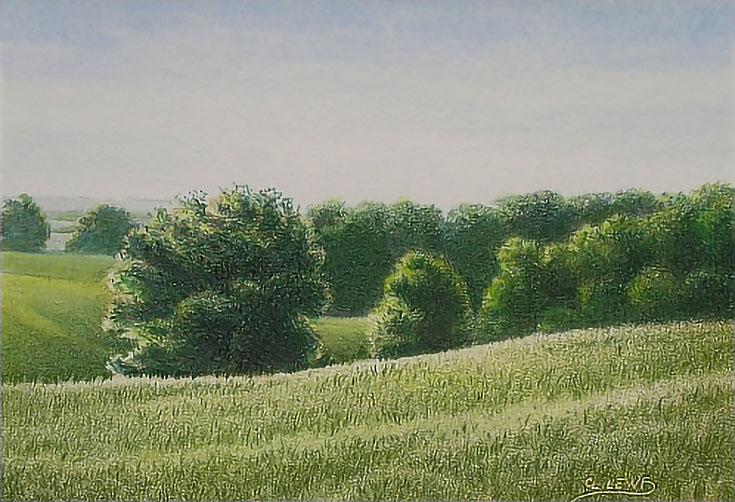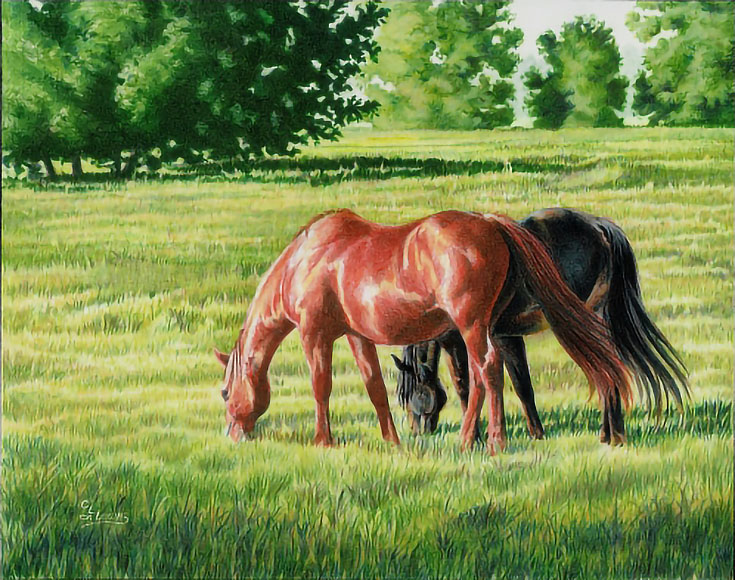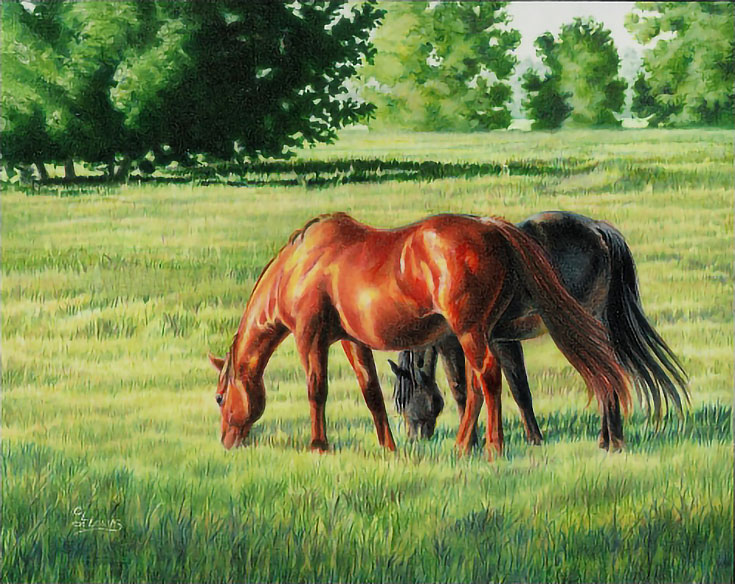When I first started dabbling with colored pencils, I’d already been oil painting for many years. I didn’t want a replacement medium, I just wanted a medium that was easier to travel with AND allowed me to create the kind of detailed work I was painting with oils.
Colored pencils checked both those boxes. They were definitely easier—and neater—to travel with than oil paints, and they were made for detailed work.
What they weren’t made for was speed. A background that took 30 to 60 minutes to paint with oil paints took hours to draw with colored pencil. Even then, they never looked finished in colored pencil—there were always specks of paper showing through. Disappointed, I gave up on colored pencils after just a few weeks.
Actually, I gave up on them several times.
Fortunately, something kept drawing me back (pun intended) and I’ve learned some valuable lessons about colored pencils that I’d like to share with you today.
1. Understand the pros and cons of the medium
Colored pencils are made for detail work, no matter what your subject is. They are more adept at creating detail that oils, acrylics, or almost anything else out there. But you have to know how to the medium works—it’s advantages and disadvantages—or it will drive you crazy!
For example, to get the most from colored pencils, you need to learn where to draw detail and where to skip the detail. The finest details should be in and around the subject and should diminish as you move away from the center of interest, especially in compositions with a lot of depth of field, such as landscape drawings.
Yes, I know the same applies to every medium, but I always found that principle easier to remember with oils than with colored pencils. (Probably because it’s a lot simpler to create soft edges with a brush and fluid paint than it is with a pencil lead.)
Practice drawing soft edges, muted colors and values, and minimal details, and you’ll achieve pictorial depth as well as or better than any other medium you’ve used.
2. Be twice as patient
Patience and persistence are necessary in all art forms. When it comes to colored pencils, however, these qualities help in one very significant additional way:
Layering.
Color is developed layer by layer when using colored pencils. It can sometimes take so many layers that you might think a colored pencil drawing is finished before it actually is.
The following image shows a drawing that looks finished, right? In my early days using colored pencil, I would have framed this and moved on to the next drawing.
But as I listened to other artists and got their feedback, I started hearing one key phrase over and over again:
“You’ve made a good start, now you just need to finish it!”
The secret to a well-finished—and completely finished—colored pencil drawing is working past the point at which you think you’re done with it. Yes, there is the risk of over-working something, but it’s a far smaller risk than leaving a drawing unfinished because you quit too soon.
Here’s the same drawing after a few more layers. What do you think?
The color is better. So are the saturation levels, especially in and around the center of interest, which are the two horses.
So be patient. Don’t stop working on a drawing too soon. . . even when it starts looking pretty good, it may still benefit from a few more layers.
3. Buy artist-grade colored pencils
If you’re new to the medium, you might think that colored pencils are only for grade school students. And you’d be half right.
Colored pencils are popular in grade school, and it’s because they’re clean, easy to use, and non-toxic.
But the colored pencils serious artists use are light years better than the pencils used by grade-schoolers. If you doubt that, buy a box of Crayola pencils and a few Caran d’Ache Luminance pencils. Take two or three strokes of each and you’ll see just how different these two products are. It’s sort of like the difference between a Chevy and a Maserati.
I can tell you from experience that if you buy inexpensive (some of us say cheap) pencils, you can still make good art, but it’s going to be a lot more difficult. In the end, you’ll also end up using more pencils with the cheapies than if you spent a little more up-front and bought a few good pencils.
4. Get ready to educate others about colored pencil
Now for what is probably the biggest hurdle for some of us. . . colored pencil artwork is not valued to the same degree as other mediums. Probably because too many people associate art made with colored pencils with the medium their grade-school student is making.
But if you really want to try colored pencils, don’t let that stop you.
Just be prepared to educate people on the skill necessary to render realistic imagery with colored pencils, on the quality of the artist-grade pencils and paper you use, and on the many colored pencil artists achieving award-winning results.
Not sure which artists to talk about? Visit the Colored Pencil Society of America’s website and browse a while. You’ll find plenty!
Oh, and one other thing: For goodness’ sake, treat your own colored pencil work with the respect it deserves. It’s the only way other people will, too!
This post may contain affiliate links.



